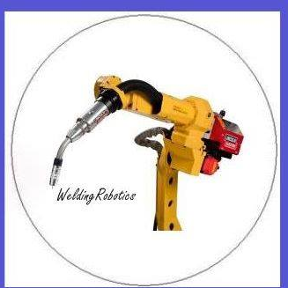Welcome to the Onshape forum! Ask questions and join in the discussions about everything Onshape.
First time visiting? Here are some places to start:- Looking for a certain topic? Check out the categories filter or use Search (upper right).
- Need support? Ask a question to our Community Support category.
- Please submit support tickets for bugs but you can request improvements in the Product Feedback category.
- Be respectful, on topic and if you see a problem, Flag it.
If you would like to contact our Community Manager personally, feel free to send a private message or an email.
What is missing to fully define sketch ?
 peter_hall
Member Posts: 196 ✭✭✭
peter_hall
Member Posts: 196 ✭✭✭
Best Answers
-
 matthew_menard
Member Posts: 96 ✭✭✭
Mid point constraint to the origin maybe?
matthew_menard
Member Posts: 96 ✭✭✭
Mid point constraint to the origin maybe?
Just spitballing since picking and dragging is my usual go to for figuring out what is and isn't constrained.
5 -
 lougallo
Member, Moderator, Onshape Employees, Developers, csevp, pcbaevp Posts: 2,016
lougallo
Member, Moderator, Onshape Employees, Developers, csevp, pcbaevp Posts: 2,016  Missing constraints to the origin. Centers of arcs aligned vertically to origin, mid-point to vertical centerline or driven dimension from origin to one side. This could also use a few mirror/symmetric constraints to cut down the number of dims as well.Lou Gallo / PD/UX - Support - Community / Onshape, Inc.5
Missing constraints to the origin. Centers of arcs aligned vertically to origin, mid-point to vertical centerline or driven dimension from origin to one side. This could also use a few mirror/symmetric constraints to cut down the number of dims as well.Lou Gallo / PD/UX - Support - Community / Onshape, Inc.5

Answers
Just spitballing since picking and dragging is my usual go to for figuring out what is and isn't constrained.
I tried to duplicate your sketch. I could not get the points where the 97.5 measurements are.
Here is a public doc.
https://cad.onshape.com/documents/398041a3da8b496b9a7f2bdc/w/5775c70c2ebb44ab957d5a0f/e/b0063bdbb96e4237a80598de
hope this helps.
Thanks
Teddy_P
... that something to try when a sketch does not blacken as expected is to "exercise" it by dragging.
Be prepared to "undo" if it ties itself in knots....
The key concept, though, is "as expected". Prudent planning prevents poor performance, in sketches even more than most endeavours.
It is good to develop the habit of trying to predict, before exercising a sketch, just how it will respond.
When first setting out a sketch, think like a circus rigger, pitching a marquee in a strong breeze. It's worse than a mere distraction to set about adjusting the individual corners before you have secured the main structural elements, starting from the centre.
The sketchwise analogy to the rigging which secures a marquee's structure to terra firma is not dimensions, but constraints.
The choice of the term "unconstrained" was not accidental.
Adding dimensions in an effort to constrain a sketch which lacks the underpinning of judicious constraints can have confusing results, although perhaps not as dramatic as watching a marquee exploring the sky....
Also, always double check that you've got fully defined constraints to the origin if the majority of you sketch is under defined. That is something that I catch myself with because it's easy to overlook.
Indeed! I reckon there's an opportunity for Onshape to make one major headache disappear, though. Solidworks and others do not seem to retain the "sign" (+ve vs -ve) of tangency, at least in the case where two arcs share an endpoint.
Here's a case in point from my SW "chamber of horrors" folder
The left side shows, in black, what SHOULD have happened when the centre of the sketch was relocated from the origin, because of a pierce constraint, when the configuration of the driving part in an assembly was changed.
Despite careful "exercising" of the sketch when it was drawn, in expectation of this exact situation, what actually happened was the (irrecoverable) "bugger's muddle" at right.
You can see that it's all about the "sign" of the tangency flipping, in just two locations, turning the bottom part of the (fully defined) sketch inside-out
@ilya_baran : Any chance Onshape could help the user in such cases? Maybe it already does?
(I'm guessing it shares the same sketch solver as SW, though, so maybe D-cubed would have to stump up the necessary enhancement?)
@matthew_menard: I don't think the observed behaviour is even technically correct, because it doesn't distinguish "Aligned" from "Anti-Aligned", even though they're the exact opposite.
For example, I attempted to replicate @andrew_troup's muddle and it worked just fine but I may have used different constraints in its construction. See https://cad.onshape.com/documents/a9b7c2785bd64f51bf977959/w/9b7bdea6c1934830bc3f53ea/e/ba7b915305874559b8aa8e7d. Change the position of the point in Sketch 2. I've tried a few places and Sketch 1 remains happy. Maybe there are positions that make it sad? (Tip: Press the "Final" button in Sketch 2 to see lots of changes without having to repeatedly exit the sketch)
That said, we do know of cases where such things will happen but we have some ideas for how to make this more robust. So stay tuned. Better yet it would be useful to share such examples with support so that we can include them in our tests of the improvements (I only have one customer example so far). So if you have a fully defined sketch that flips or can't be solved when you modify an upstream feature, but looks like it should work, then please share with support and reference BEL-32228.
TVP, Onshape R&D
That's an impressive and encouraging answer.
I recreated my sketch using the original constraint scheme as near as I can recollect, and infer from the behaviour, and from the (scarcity of) dimensions shown on the screen grab.
I do know there were no other dimensions, no angles for instance.
The 120 deg spacing was loosely mandated by symmetric constraint of the endpoints of the two sloping symmetry lines about the vertical symmetry line, and then the same idea, rotated 120 deg.
Evidently I did not pursue this to its logical conclusion, and do it a third time to lock all the lines into a 120/120/120
I infer this because the angular spacing was no longer equal after the tangency flipped - but because your recreation DOES mandate 120 degree spacing, it's not surprising to me that your sketch remained robust.
I think I left that third line alone, because otherwise the sketch became overconstrained when all the endpoints of the daisy-chained entities were connected.
This explains why the upper two circles are able to flip their spacing, and I've tried to maintain that aspect in my recreation.
The most disappointing aspect of the SW precedent was that, expecting trouble, I dragged the sketch by every conceivable entity, and it seemed entirely robust. It only went pear-shaped when the centre was moved by external referencing (pierce constraint, as mentioned earlier, in the context of an assembly)
SO, the good news is that (so far!) my sketch seems robust to relocation from the external reference to the first sketch.
I'll be in touch if I can find a way to make it flip, Paul. Thanks very much for taking this to heart.
https://cad.onshape.com/documents/022a30741c124861b1495c3b/w/5cbad81e77b841b5a20b3bf2/e/09b468630f504599b9f2c646